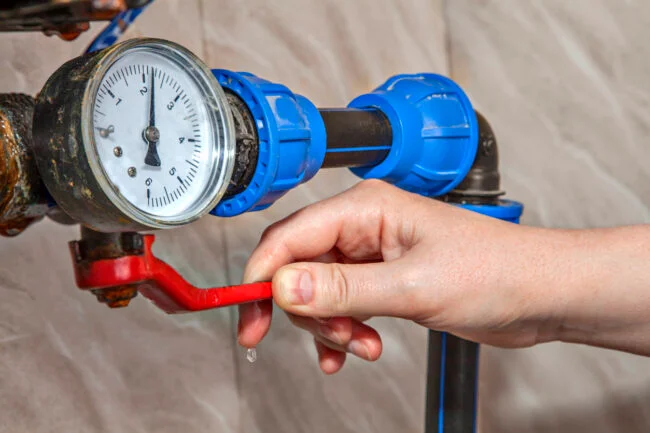Experiencing inadequate water pressure in your home, affecting your showers and faucets? Don’t tolerate a feeble flow any longer. Discover our top recommendations for resolving water pressure issues in your household.
Commencing or concluding your day with a lackluster shower can be disheartening. Despite other home maintenance priorities, it’s essential to address low water pressure. Ensuring a satisfying water flow is not only for your benefit but also for the convenience of your houseguests.
Don’t let insufficient water pressure tarnish your reputation as a gracious host. Commit to achieving a robust water flow for both you and your visitors by exploring these solutions for enhancing water pressure. Some are quick fixes, while others may require more extensive efforts.
- Consult Your Neighbors
Start by contacting your neighbors to check if they are encountering similar water pressure issues. If they are, the problem might lie within the city’s municipal water system. Just like your home’s plumbing, citywide systems can suffer from leaks, clogs, sediment buildup, and corrosion.
- Inspect Your Well Pump
Homes either receive water from a municipal supply or have well systems. Low water pressure can be due to issues with the well or the well pump supplying water to your home. Various pump types, such as centrifugal or submersible pumps, may need maintenance or replacement. In cases of high water demand, drilling a new well might be necessary.
- Test the Water Pressure

Before contacting your local water department, evaluate the city water pressure using a water pressure test gauge. Screw the gauge onto a hose faucet, turn on the tap, and ensure that all other faucets and water-using appliances are off. The ideal pressure ranges from 60 to 80 psi. After verifying the citywide pressure situation, you can proceed accordingly.
- Address Pipe Clogs
Over time, mineral deposits can accumulate in your pipes, especially in areas with hard water. Severe deposits can constrict the pipe’s diameter, impeding water flow and causing low pressure. You can attempt to dissolve these mineral deposits by placing a ziplock bag filled with vinegar over showerheads or faucets and leaving it overnight. If the issue persists, consult a plumber to handle severe clogs.
- Check the Main Water Valve

Ensure your home’s main water valve, usually located near the meter, is fully open. Sometimes, it can be accidentally closed during routine repairs, leading to reduced water flow and pressure. Adjusting the valve is a simple task that you can perform yourself.
- Replace the Water Pressure Regulator
Many homes have water pressure regulators to prevent water hammer. When these regulators malfunction, it can cause a gradual drop in pressure. Consider resetting or replacing this part, preferably with professional assistance.
- Detect Leaks

Damaged pipes can lead to water leaks, reducing water pressure. You can test for leaks by closing all indoor and outdoor faucets, turning off the water valve, and checking the water meter reading after a few hours. An increased reading indicates a leak, necessitating a plumber’s attention. When replacing pipes, opt for materials like plastic or copper to prevent corrosion.
- Install a Home Water Pressure Booster
If your household’s location negatively affects water pressure due to factors like gravity or distance from the municipal source, consider installing a water pressure booster pump. Booster pumps can increase water pressure, but professional installation is recommended.
In conclusion, these are effective methods to troubleshoot and resolve low water pressure issues in your home. With some research and a bit of know-how, you can enjoy a more robust water flow, whether it involves installing a booster pump or simply adjusting a valve.
FAQs:

- Why does water pressure occasionally drop?
Several factors can contribute to this issue, including well problems, supply valve issues, and gravity-related pressure drops. - How can I increase water pressure without a pump?
Locating and fixing leaks, ensuring supply valves are fully open, and replacing corroded pipes can enhance water pressure. - Why is water pressure low in one bathroom?
This may be due to gravity issues, and installing a home water pressure booster pump could be necessary. - How can I improve water pressure in the shower?
Cleaning the showerhead with vinegar or replacing it with a model that includes a replaceable filter can enhance shower water pressure. - Why is only my hot water pressure low?
Possible causes include corroded pipes, partially closed water heater valves, or sediment buildup in the water heater. Expansion tank issues typically lead to increased pressure.
images sources : istockphoto – bobvila










